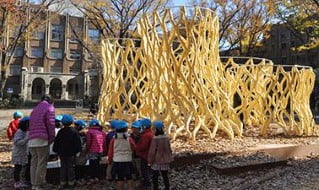The Architecture of the Mosque: Historical Roots and Modern Influences
An overview of mosque historical evolution over the course of the millennium extending from the birth of Islam until the mid-seventeenth century
Description
This open online course focuses on the architecture of the contemporary mosque. Since the mosque is a historically defined building type, however, the course also will provide an overview of its historical evolution over the course of the millennium extending from the birth of Islam until the mid-seventeenth century. This will be followed by the impacts of Westernization and modernization on its architecture beginning in the mid-eighteenth century. The course will then present initial attempts dating back to the 1950s that aimed at designing mosques that are more rooted in contemporary architectural practices rather than being defined by historical prototypes. Beginning with mosques designed since the 1970s, the course will focus on ones that have received the Aga Khan Award for Architecture and that have been shortlisted for it.
All in all, the course presents over thirty mosques covering a wide geographic expanse that includes East Asia, the Indian Subcontinent, Iran, Turkey, the Arab World, Western Africa, and Europe.
The course is intended for architects, students of architecture, and to those interested in architecture in general.
What you’ll learn
The overall development of the mosque from the birth of Islam to the present.
The development of mosque architecture during the early centuries of Islam, specifically the hypostyle mosque, which spread across vast geographic areas.
The development of the mosque-type known as the four-iwan mosque and examples of it from Iran and Egypt that date from the twelfth to the seventeenth centuries.
The central-dome mosque, specifically imperial Ottoman mosques that date to the sixteenth century.
Mosques from the early-modern period dating from the early eighteenth to the early twentieth centuries that show the appearance of European / Western influences.
Mosques belonging to the second half of the twentieth century. This period features the emergence of the modern traditional mosque characterized by an emphasis on establishing architectural connections to historical prototypes, and also the modernist mosque, which is characterized by an emphasis on connecting the architecture of the mosque with contemporary architectural approaches.
The mosques that have received the Aga Khan Award for Architecture (and a few mosques that have been shortlisted for it) since the establishment of the Award in 1980 and until the end of the twentieth century. These mosques represent overall approaches to the architectural design of the mosque from different parts of the world during that period.
The mosques that have received the Aga Khan Award for Architecture (and a few mosques that have been shortlisted for it) during the twenty-first century. These mosques represent overall approaches to the architectural design of the mosque from different parts of the world during the past two decades.
User Reviews
Be the first to review “The Architecture of the Mosque: Historical Roots and Modern Influences”
You must be logged in to post a review.







There are no reviews yet.